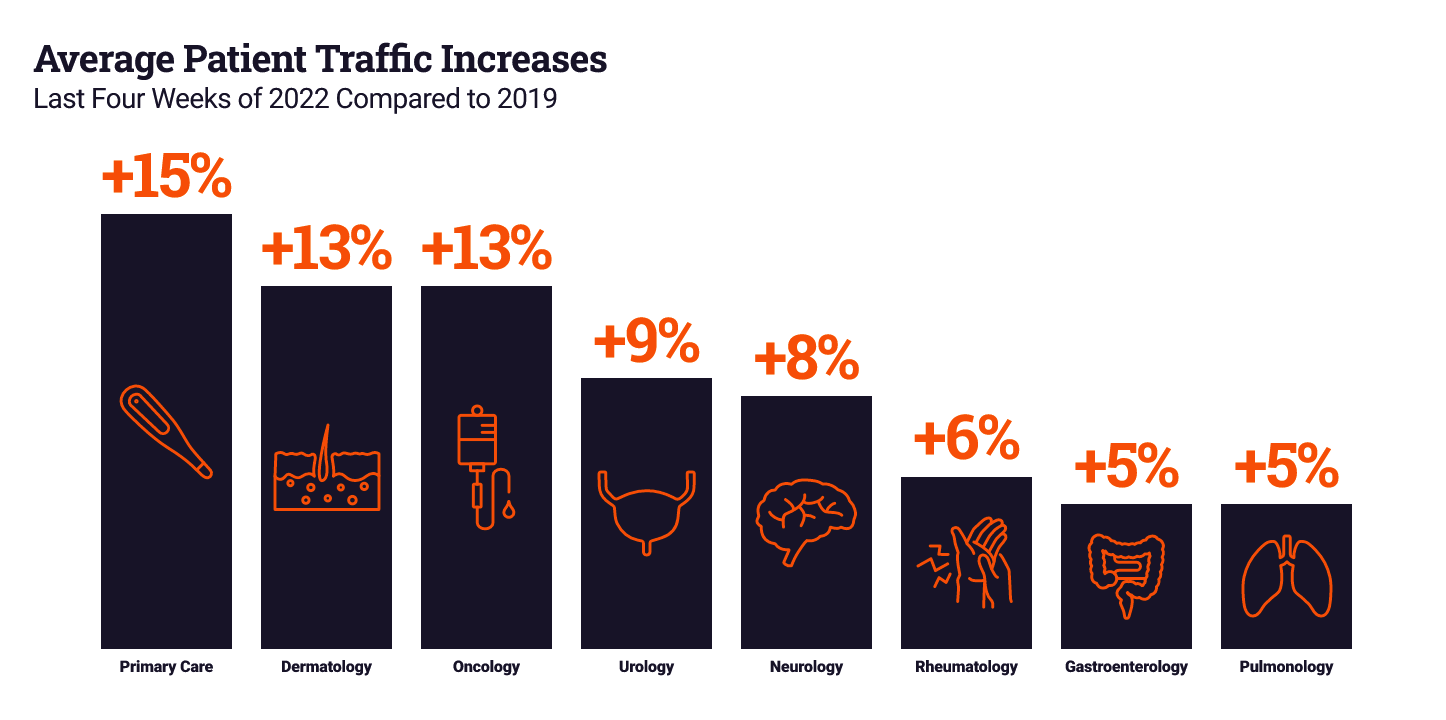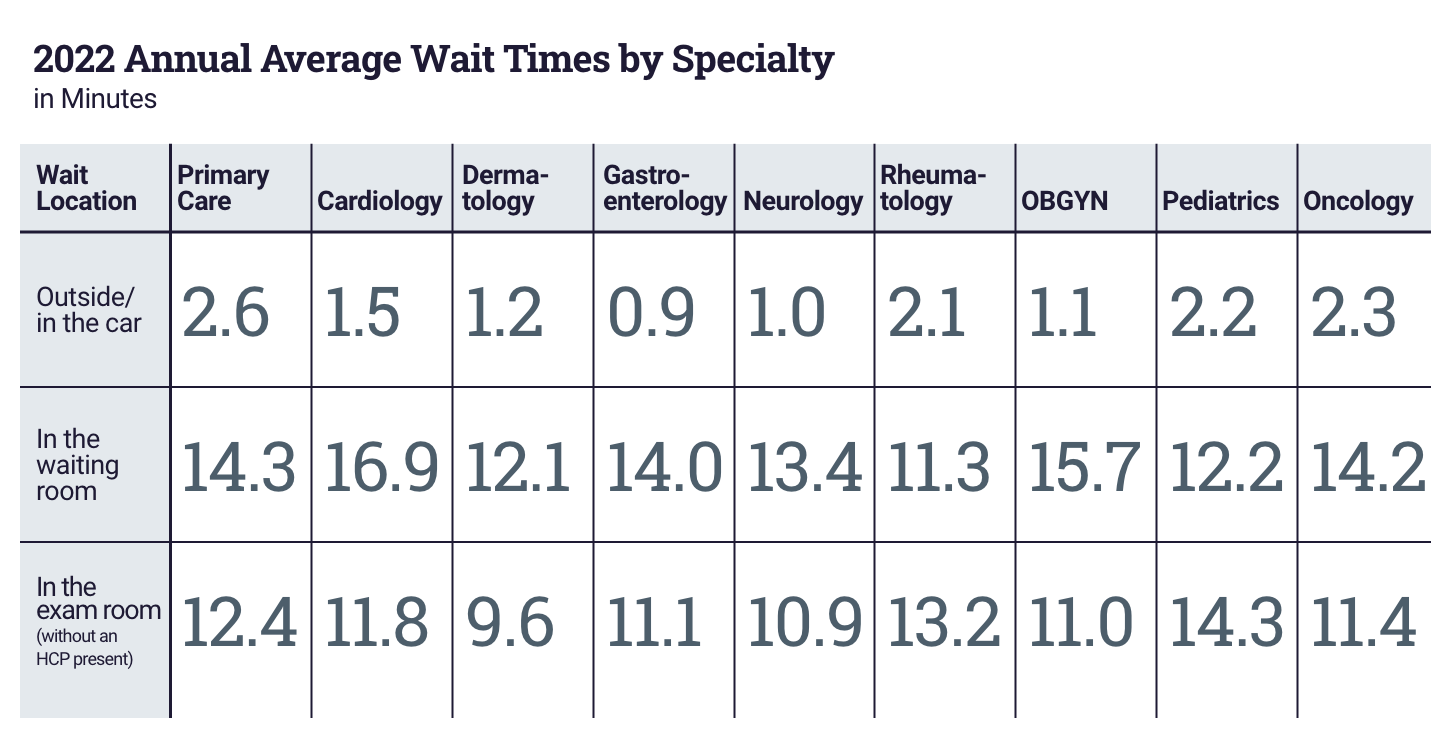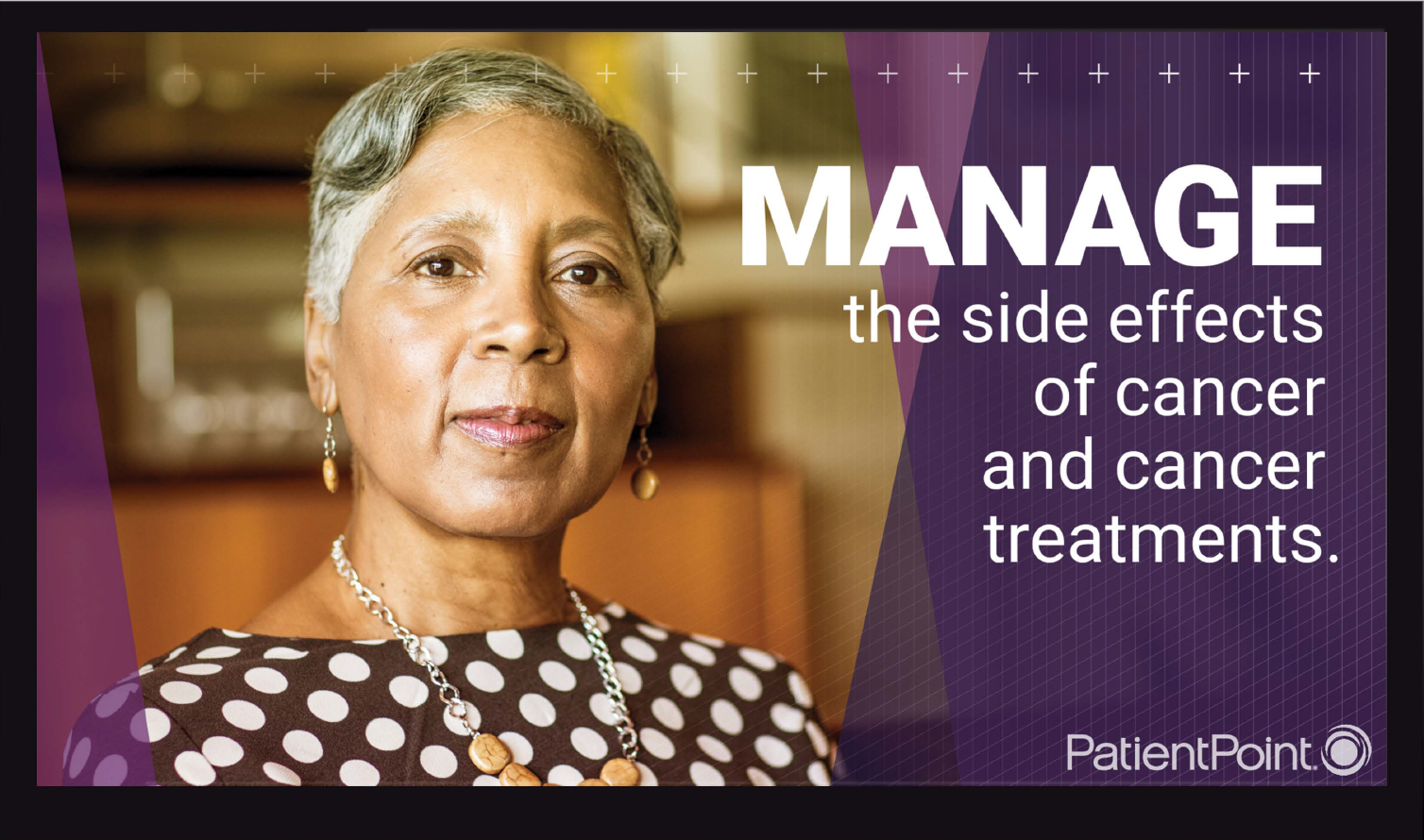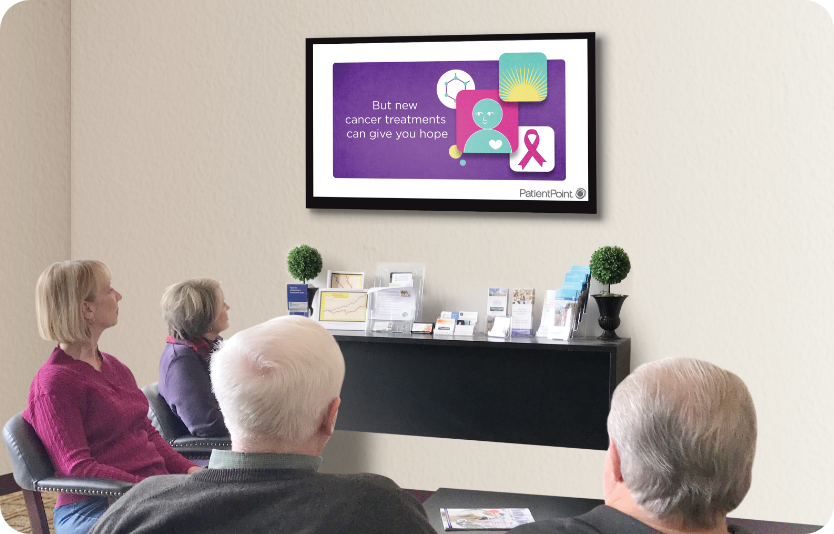In-office visits took a plunge at the height of the COVID-19 pandemic. Some patients were scared to come into the office, while others had elective surgeries pushed off. Unlike in other specialties, many oncology patients had to continue to come into the office for treatments that couldn’t be delayed.
Today, patient traffic across specialties isn’t just back to pre-pandemic levels; it’s even higher, and this is especially true in oncology.
Patient Traffic
We analyzed patient traffic at the end of 2022 and compared it to patient traffic at the end of 2019. For all specialties, patient traffic increased, but the greatest change occurred for primary care, oncology and dermatology.1

Wait Times
In 2022, the average patient spent 1.5 minutes outside or in their car and 13.8 minutes in the waiting room before their appointment.2 Once in the exam room, they spent another 12.4 minutes waiting without a provider present.2 Oncology practices had similar results with the majority of the wait occurring in the waiting room.

Make the Wait Time Count
Long wait times can leave patients frustrated with their overall experience, but they don’t have to be. With 97% of all patients spending time in the waiting room, and oncology patients potentially spending hours in the office for treatments, you have the opportunity to truly make these moments count.2
The waiting room is the right moment to boost their awareness of the resources and services you offer. We are advocates of using digital platforms to share practice messages because they can be quickly updated, do not require tacking printed flyers to the wall and help patients at all levels of health literacy understand important information for their care. Easy-to-understand information inspires patients to be active in their care and talk to their doctor.

The exam room is where you can provide more in-depth health education that is specific to their diagnosis and treatment. Educational resources prepare patients to have personal conversations with their doctors about their care plans. Technology also makes it easy to create processes that allow MAs to get patients started with watching procedure videos or reading treatment guides before the oncologist comes into the room. The information prepares the patient to talk to their doctor about specific questions they have and makes better use of the doctor’s time when they are in the room.
During their infusion or chemotherapy, create a relaxing environment with a program that offers wellness messages, inspirational patient stories and tips on taking medications and managing side effects. In addition, provide information about their care team and where they can receive financial, transportation or food assistance to relieve anxiety.
And if you’re taking part in the Enhancing Oncology Model, information across all touchpoints in the office will help you deliver quality care that improves outcomes and meets requirements.
Having the right information throughout your office is proven to increase screenings. See how by reading our Outcomes Case Study.
1MedFuse Data by DarkMatter2bd. 2022 Baseline: Average of 2020 and 2021 10-Day Average. 2021 Baseline: Average of 2019 and 2020 10-Day Average
2“During your most recent visit to your healthcare professional about how many minutes did you spend…?” 2021-2022 Nationwide Web Surveys of 11,198 respondents who visited physician offices installed with the PatientPoint Communicate, Educate, and/or Interact Programs. Data as of 12/31/22

